Earth — Our Shared Home Chapter Notes | Our Wondrous World Class 5 - New NCERT PDF Download
The Blue Planet
- Group Captain Shubhanshu Shukla, India’s first man on the International Space Station, said the Earth looks connected and shared.
- He told the then-Prime Minister that from space, Earth looks like one big home with no visible borders or countries.
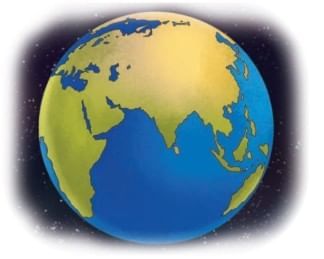
Do you know?
Wing Commander Rakesh Sharma, the first Indian in space, said India looked “Saare Jahaan Se Achcha” (the best in the world) from space.
- From space, the Earth looks tiny, and small details like cities and villages are not visible.
- The shape of land and sea is visible, but no political boundaries.
Do you know?
DIGIPIN acts as a digital address, assigning a unique 10-character code to every small spot in India, like a name tag for your home or school. It helps postmen, ambulances, and delivery people locate you quickly, even in villages or cities.
- When we look at Earth from very high above, we can’t see any borders or lines between countries.
- Nature doesn’t have boundaries—air, water, clouds, seeds, and animals can move freely across the world.
- People all over the world are connected in many ways.
- Just like people in India share mangoes, rivers, and festivals, people across the world also share many things.

- The clothes we wear, the food we eat, and even the toys we play with might come from different countries.
- People share ideas, music, stories, food, and inventions.
- We are all connected through nature, trade (buying and selling), travel, and how we take care of our Earth.
- Earth is one big home for everyone!
Story 1: The Travelling Birds
Have you ever seen pink and black birds flying in groups?
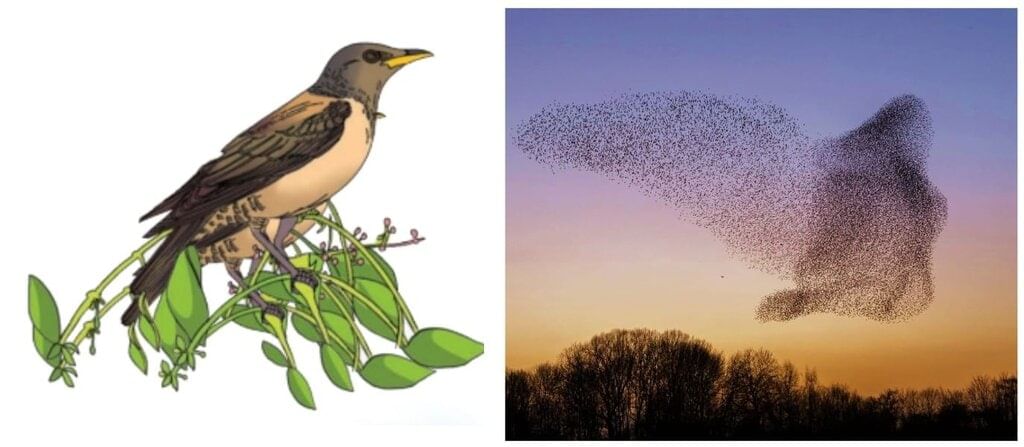 Rosy starlings, pink and black birds, fly in large groups and migrate thousands of kilometres from southern Russia, Mongolia, and nearby countries to India every winter.
Rosy starlings, pink and black birds, fly in large groups and migrate thousands of kilometres from southern Russia, Mongolia, and nearby countries to India every winter.- They thrive in India’s warm weather and feed on locusts and grasshoppers, aiding farmers by controlling crop pests.
- It’s amazing that such small birds can travel so far and provide such helpful benefits.
- When animals move freely and safely across the world, it highlights the deep connection of nature across the globe.
Story 2: Yoga — India’s Gift to the World
Can you believe an ancient Indian practice like yoga makes you strong, happy, and is now followed everywhere around the world?
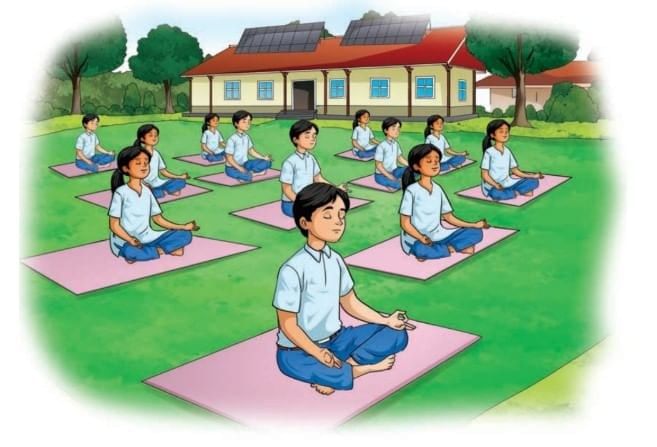
- Since ancient times, people in India have practised yoga to keep their bodies healthy and their minds peaceful, living in harmony with themselves and nature.
- Yoga has been practised in India for more than 3,000 years.
- Over time, travellers, scholars, and teachers from India shared yoga with the world, and slowly, people in other countries began to learn and practice it.
- Yoga is practised in almost every country.
Do you know?
Isn’t it amazing that the United Nations declared 21 June as the International Day of Yoga in 2014, with millions worldwide joining in a practice that began in India?
Story 3: Chilli — A Spice That Changed Our Lives!
Wonder where the chillies we grow come from?
- They originally are from South America, brought to India by Portuguese travellers 400 to 500 years ago!
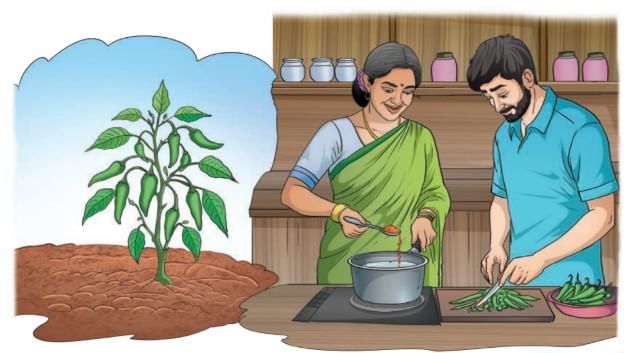
- Chillies adapted to new soil and climate, becoming a staple in Indian kitchens.
- People in India loved chillies so much that they’re now essential to our food, replacing black pepper as a spice.
- The chilli’s journey shows how plants from distant lands can become part of new cultures and cuisines.
Story 4: The Sweet Story of Sugar!
Just as chillies travelled to India, sugar journeyed from India to other parts of the world.

- People worldwide didn’t know sugar, using honey and other natural sweeteners instead.
- In India, the method of making jaggery from sugarcane juice was first discovered, later evolving into sugar production.
- This knowledge spread globally through trade and travel.
- Did you know rice, mangoes, and bananas from India also reached other lands, now enjoyed worldwide, with their journey starting here?
- Our meals are like world travellers, carrying stories and flavours, showing how deeply connected we all are.
Story 5: Mexican Marigold in India
Did you know the marigold flower originally comes from Mexico?
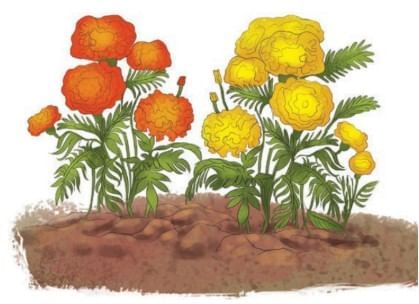 In Mexico, marigolds are special flowers used during festivals and celebrations.
In Mexico, marigolds are special flowers used during festivals and celebrations.- Over time, the marigold travelled across the world and reached India.
- People in India loved the flower—maybe because of its bright orange and yellow colours that felt warm, joyful, and full of spirit.
- Marigolds are used everywhere in India—in temples, homes, weddings, and during festivals like Diwali.
- It is amazing how a flower from far away became such a big part of Indian celebrations.
Story 6: Indian Cows in Brazil
A long time ago, Portuguese traders took some Indian cows to Brazil.
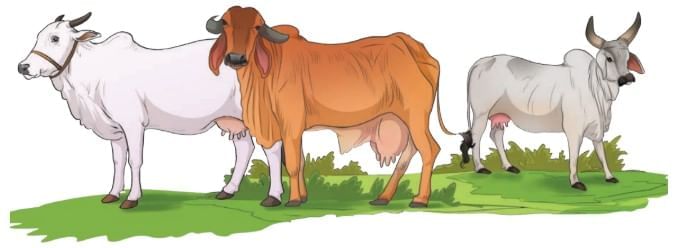
- These cows were strong, gave lots of milk, and were comfortable in Brazil’s weather.
- Slowly, their numbers grew and they became very important in Brazil.
- Today, most of Brazil’s milk comes from three Indian cow breeds:
Gir, Kankrej, and Ongole. - These cows are so special in Brazil that their pictures are on stamps and coins!
- It is so cool how Indian cows became stars in a country far away.
Web of Life
- These stories are about people, journeys, and sharing.
- Despite differences in language or culture, we learn and inspire each other.
- Birds flying, seeds growing, and yoga spreading show we are all connected.
- Earth is a place where people, animals, plants, and ideas come together.
- By caring for each other and the planet, we join this connection.
One Earth, One Family
A beautiful saying from ancient India— ‘Vasudhaiva Kutumbakam’, meaning ‘the world is one family.’
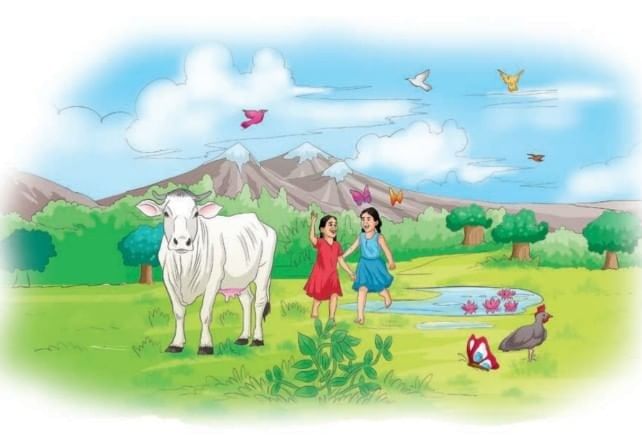 All people, animals, plants, and nature form one big family on Earth.
All people, animals, plants, and nature form one big family on Earth.- Where we learn to live with respect, care, and love for each other.
- This is the teaching of ‘Vasudhaiva Kutumbakam’, which means “the world is one family.”
- Earth is a very special planet—it’s the only one we know where people, animals, and plants can live.
- For thousands of years, Earth has taken care of all living things.
- But Earth needs care too!
- When we take care of the Earth, we are also helping one another.
- We must treat Earth as a precious gift—one we should protect for ourselves, for others, and for the future.
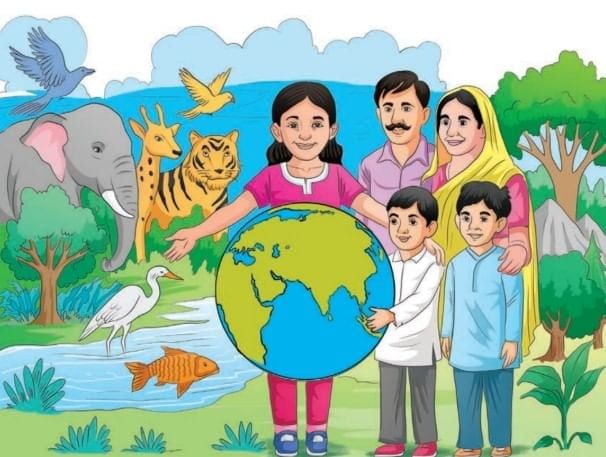
Do you know?
The Ministry of Environment, Forest and Climate Change (MoEFCC) logo shows that humans and nature are connected and must live in harmony to care for each other.
|
11 videos|224 docs|10 tests
|
FAQs on Earth — Our Shared Home Chapter Notes - Our Wondrous World Class 5 - New NCERT
| 1. What are the key themes explored in "The Blue Planet" stories? |  |
| 2. How have travelling birds contributed to our understanding of ecosystems? |  |
| 3. What is the historical significance of yoga as presented in the stories? |  |
| 4. How did the introduction of chilli affect global cuisine? |  |
| 5. What role do Indian cows play in Brazil's agriculture? |  |




















